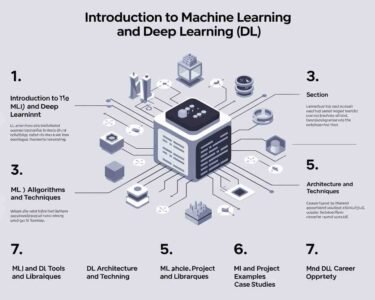Becoming a Data Analyst in 2025

What Is a Data Analyst and Why Is It Important?
A data analyst is someone who examines data to provide insights essential for business decisions. Their role is crucial for an organization’s growth, customer behavior analysis, market trend identification, and optimization.
Step-by-Step Guide to Becoming a Data Analyst
1. Master Mathematics and Statistics
Statistical and mathematical concepts are vital for data analysis. Focus on these areas:
- Descriptive Statistics (Mean, Median, Mode)
- Inferential Statistics (Hypothesis Testing, Regression Analysis)
- Probability Theory
2. Learn Programming Languages
Several programming languages are key for data analysis:
- Python: For data cleaning, visualization, and developing machine learning models.
- R: Primarily for statistical analysis and data visualization.
- SQL: Essential for data extraction from databases.
3. Familiarize Yourself with Data Visualization Tools

Data visualization is essential for data analysts. Learn these tools:
- Tableau: Creates interactive reports and dashboards with ease.
- Power BI: Microsoft’s tool for building quick, effective visual dashboards.
- Matplotlib & Seaborn: Python libraries for custom visualizations.
4. Understand Machine Learning and Data Modeling Basics
While data analysts mainly focus on analysis, having basic machine learning knowledge will give you an edge. Learn about linear regression, clustering, and classification. Familiarize yourself with Scikit-learn for basic modeling.
5. Learn Database Management Systems
SQL skills are crucial for data extraction. Additionally, consider learning about NoSQL databases like MongoDB or Cassandra.
6. Create and Practice Projects
Prove your skills by uploading projects to GitHub. Project ideas include:
- Sales Data Analysis
- Customer Segmentation
- Market Trend Analysis
- COVID-19 Data Tracking and Visualization
Essential Tools and Resources
Popular tools to get started:
- Python (Pandas, NumPy, Matplotlib, Seaborn)
- R Programming
- SQL (MySQL, PostgreSQL)
- Tableau, Power BI
- Google Analytics
- Excel (Data Analysis Toolpak)
Do’s and Don’ts
Do’s:
- Practice regularly and work on new projects.
- Keep your GitHub profile updated.
- Build a LinkedIn profile and network.
Don’ts:
- Avoid only learning theory. Apply it in practical projects.
- Don’t create reports without visualization.
Career Tips
- Gain experience through internships.
- Start your career as a data analyst, then consider advancing to data scientist or business analyst roles.




